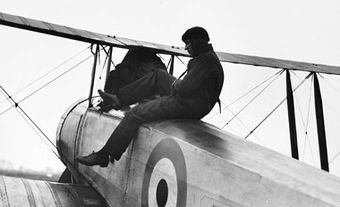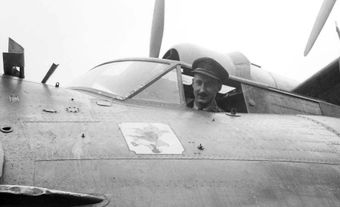Edward Baynes
Edward Baynes, soldier, military officer in the WAR OF 1812 (b unknown; d at Sidmouth, England, Mar 1829). Edward Baynes entered the army as an ensign in 1783. Much of his early career was spent in the West Indies, including in command of a detachment of army troops acting as marines on a British frigate. In 1790 Baynes became a lieutenant. Between December 1794 and May 1806 he served as aide-de-camp (ADC) to Lieutenant-General Sir James Craig at the Cape of Good Hope and in the East Indies, India, Gibraltar, Malta, Naples and Sicily, with brief periods in England. Baynes became a captain in 1795, brevet major in 1796, major in 1800 and brevet lieutenant colonel in 1802.
Service in British North America
Baynes returned to England in 1806, and in August he was appointed adjutant-general of the forces in British North America. On 17 September he was appointed commander of the Nova Scotia Fencibles. In 1811 Baynes received a brevet colonelcy, and in 1812 became lieutenant-colonel of the recently raised Glengarry Light Infantry Fencible Regiment, based in UPPER and LOWER CANADA and recruited throughout British North America. Baynes also served briefly as military secretary to Isaac BROCK.
War of 1812
As the adjutant-general of British North America during the War of 1812, Baynes was Lieutenant-General Sir George PREVOST's principal staff officer and drafted most of Prevost's general orders and his official correspondence. Baynes also corresponded personally with many officers and officials in Canada and Britain and was as often the bearer of bad news as of good. Baynes conducted the negotiations of the Prevost-Dearborn Armistice of August 1812.
Baynes accompanied Prevost and Commodore Sir James Lucas YEO to Kingston during May 1813. His only opportunity for higher command came when he led British forces on the raid on SACKETS HARBOR, 27-29 May 1813. During the passage, Baynes considered cancelling the raid, but decided to continue following a successful skirmish against reinforcements heading for Sackets Harbor. Baynes landed with the troops and, once American resistance intensified, sought Prevost's concurrence with his decision to recall the troops and return to Kingston. His decision proved unpopular with the troops, but was probably correct given the situation.
Prevost then appointed Baynes to negotiate a ceasefire proposed by American Secretary of State James Monroe at Champlain, NY, on 1 May 1814. While Baynes received detailed instructions from Prevost, his American counterpart had no authority to negotiate and the talks ended that day. Baynes continued as the adjutant-general and upon the recommendation of Prevost was promoted to major general in June 1814. During the PLATTSBURGH campaign of September 1814, Baynes served as adjutant-general of the British Left Division.
Baynes returned to England after the war. Despite his efficient, albeit lengthy, service in North America, Baynes was largely unknown in the army and he went on half pay in 1816, retiring from the army in 1828.

 Share on Facebook
Share on Facebook Share on X
Share on X Share by Email
Share by Email Share on Google Classroom
Share on Google Classroom


